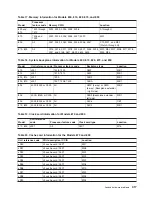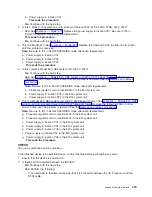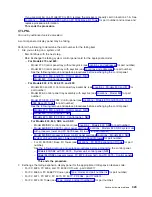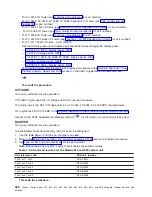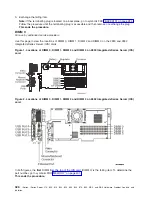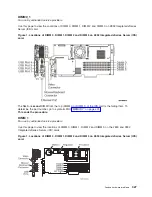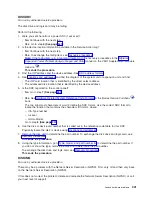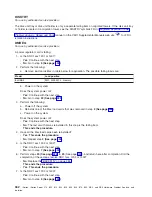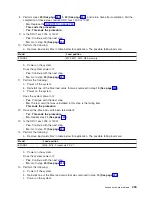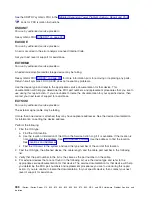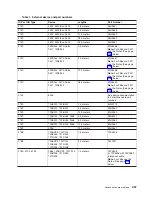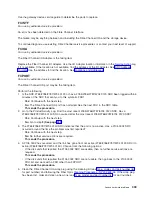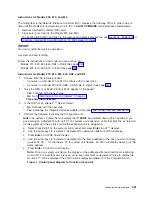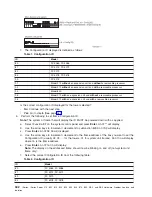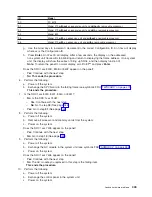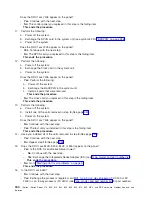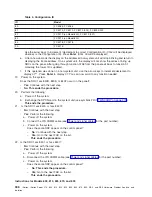
DISKDRV
For
use
by
authorized
service
providers.
The
disk
drive
and
logic
card
may
be
failing.
Perform
the
following:
1.
Were
you
sent
here
from
a
power
SRC
(1xxx
xxxx)?
v
No
:
Continue
with
the
next
step.
v
Yes
:
Go
to
step
6
(See
page
.
2.
Is
the
device
location
information
available
in
the
Service
Action
Log?
v
No
:
Continue
with
the
next
step.
v
Yes
:
To
exchange
the
failing
item,
see
Note:
If
the
failing
item
is
in
a
migration
tower,
go
to
the
recovery
procedures
in
the
manual
on
the
V5R1
Supplemental
Manuals
web
site
.
This
ends
the
procedure.
3.
Find
the
IOP
address
and
the
device
address.
See
4.
See
and
find
the
diagram
of
the
system
unit
or
expansion
unit
and
find:
v
The
IOP
card
location
that
is
identified
by
the
direct
select
address.
v
The
addressed
disk
location
that
is
identified
by
the
device
address.
5.
Is
the
SRC
reported
on
the
control
panel?
v
No
:
Go
to
step
7
(See
page
.
v
Yes
:
See
in
the
iSeries
Service
Functions
book.
The
two
right-most
characters
of
word
2
define
the
SRC
format.
Use
the
correct
SRC
format
to
locate
the
function
that
contains
the
characters
tttt
lmmm,
where:
–
tttt=Type
number
–
l=Level
–
mmm=Model
Go
to
step
8
(See
page
.
6.
Use
the
disk
or
device
unit
number
that
is
called
out
in
the
reference
code
table
for
this
SRC.
Physically
locate
the
disk
or
device
using
7.
Remove
the
disk
unit
to
determine
the
part
number.
To
exchange
the
disk
drive
and
logic
card,
see
This
ends
the
procedure.
8.
Using
the
type
information,
go
to
to
determine
the
part
number.
If
you
do
not
know
the
type,
remove
the
disk
unit
to
determine
the
part
number.
To
exchange
the
disk
drive
and
logic
card,
see
This
ends
the
procedure.
DISKIMG
For
use
by
authorized
service
providers.
There
may
be
a
problem
with
the
Network
Server
Description
(NWSD).
First,
vary
off
and
then
vary
back
on
the
Network
Server
Description
(NWSD).
If
this
does
not
correct
the
problem,
delete
and
recreate
the
Network
Server
Description
(NWSD),
or
call
your
next
level
of
support.
Analyze
hardware
problems
331

